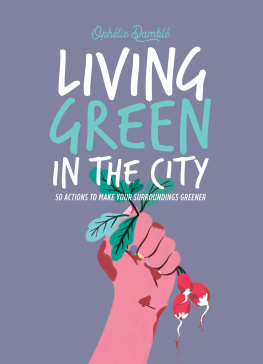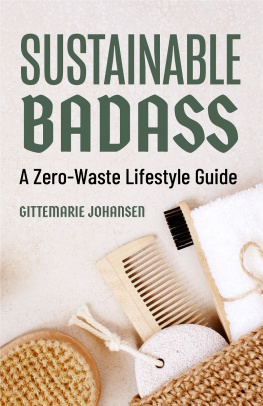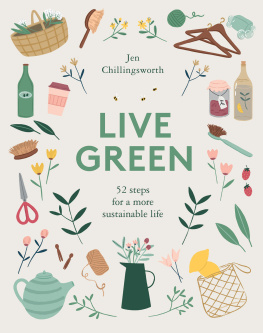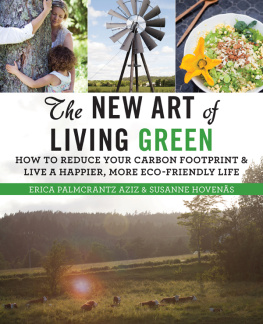J. Aytalum - Green Living
Here you can read online J. Aytalum - Green Living full text of the book (entire story) in english for free. Download pdf and epub, get meaning, cover and reviews about this ebook. year: 2020, publisher: J. Aytalum, genre: Children. Description of the work, (preface) as well as reviews are available. Best literature library LitArk.com created for fans of good reading and offers a wide selection of genres:
Romance novel
Science fiction
Adventure
Detective
Science
History
Home and family
Prose
Art
Politics
Computer
Non-fiction
Religion
Business
Children
Humor
Choose a favorite category and find really read worthwhile books. Enjoy immersion in the world of imagination, feel the emotions of the characters or learn something new for yourself, make an fascinating discovery.
Green Living: summary, description and annotation
We offer to read an annotation, description, summary or preface (depends on what the author of the book "Green Living" wrote himself). If you haven't found the necessary information about the book — write in the comments, we will try to find it.
Do you want to live greener and contribute to the transition to a sustainable economy and a healthy world?
Then choose to live greener with these 7 simple steps.
Green Living — read online for free the complete book (whole text) full work
Below is the text of the book, divided by pages. System saving the place of the last page read, allows you to conveniently read the book "Green Living" online for free, without having to search again every time where you left off. Put a bookmark, and you can go to the page where you finished reading at any time.
Font size:
Interval:
Bookmark:
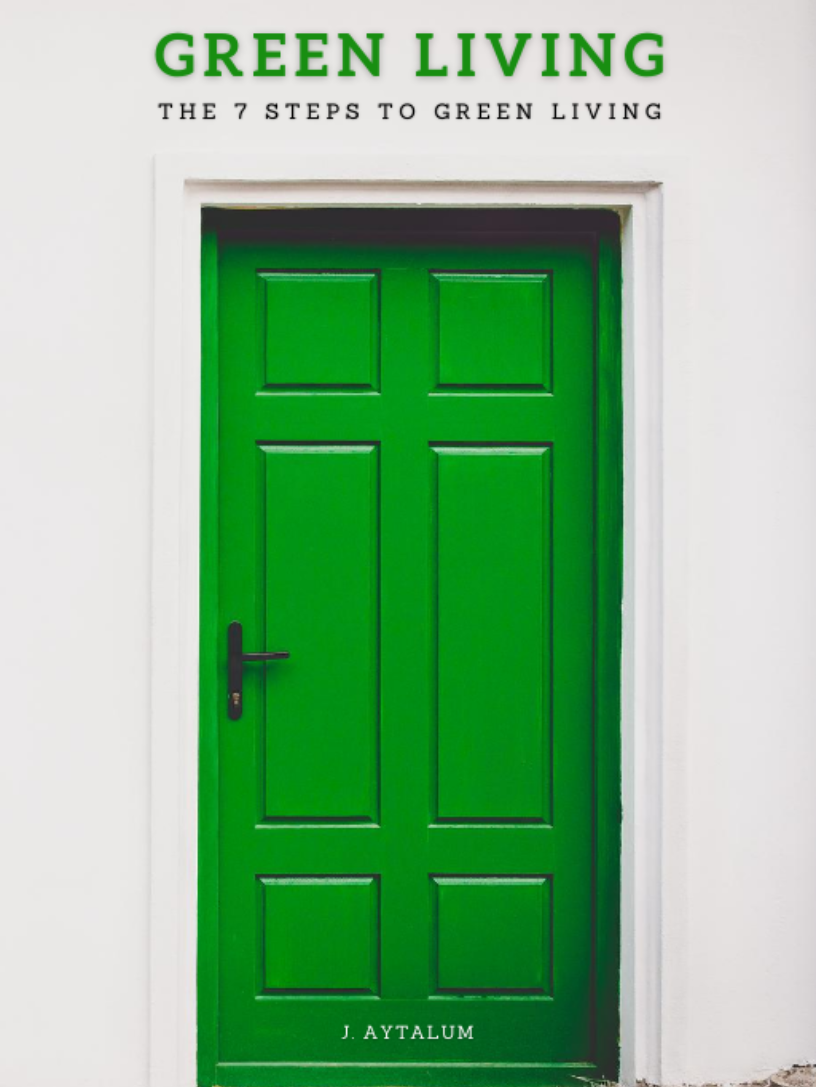
 |  |


D o you want to live greener and contribute to the transition to a sustainable economy and a healthy world?
Would you like to reduce your impact on our planet?
Living green is not difficult.
And you can often achieve very good results with a number of small steps.
Below you will find a simple 7-step plan with practical tools that you can get started with today.
You don't just live green for the climate, the earth, and the oceans.
You do so also to save more money and, as you shall see, to make your body healthier.
So start immediately with this systematic plan and experience how nice it is to live a greener life.

. Reduce your energy consumption.
Energy reduction is one of the most popular ways to save the planet.
By using less energy, less coal has to be burned and less greenhouse gases and particulate matter are released into the air.
This is not only better for the climate, but also better for our airways.
In addition, energy costs a lot of money, and by using less of it, you can save a lot of money for other things.
Moreover, the switch to sustainable green electricity is much easier to make if you use less energy.
The lower your energy needs, the fewer solar panels or windmills are needed!
Saving energy is a mindset. A habit.
You can accustom yourself to always use energy sources such as electricity, gas, wood, oil, coal, diesel and petrol sparingly.
Make sure that the energy from these sources isnt wasted in your life.
There are tons of ways to save energy, and below some ideas to get you started.
1) Replace incandescent lamps with energy-saving lamps or LED lamps.
2) Turn off devices and lights you don't use by default.
3) Lower your refrigerator, defrost your freezer regularly.
4) Insulate your house better, only heat in rooms where its needed.
5) Choose electronics with an energy label A.

. Preserve precious water.
Only 1% of all water on earth is drinkable for humans.
That isnt much, especially when you consider that the world's population has doubled since 1960 and this growth is unlikely to stabilize in the coming decades.
Fresh, pure and safe water is scarce and is in danger of becoming even scarcer.
New purification and desalination techniques may be able to change this in the future.
At the moment, you can reduce your load on the water cycle by using drinking water sparingly.
This saves you money and you make a small contribution.
1) Use water-saving faucets and showerheads and a shower coach.
2) Dont let water flow unnecessarily (e.g. when brushing your teeth).
3) Collect rainwater to water your plants and lawn, and for such uses like to flush your toilet.
4) Do not flush harmful substances down the toilet such as medicines, tampons, sanitary towels, and chemicals.
5) Prevent pollution by using green cleaning products.

. Choose organic vegetables .
As the demand for food has soared over the past century, global agriculture has also intensified significantly.
More food needs to be grown for a growing number of people, and of course for the animals in meat production.
Chemical pesticides have been used for decades to achieve this.
This kills the harmful insects that would otherwise damage the crops.
However, the disadvantage is that these toxins are also found in the crops.
Washing only helps a little, because the poison has grown in the crops.
In addition, the massive use of chemicals worldwide has led to severe soil erosion, soil pollution, groundwater pollution and ultimately pollution of our oceans.
One ecosystem is not separate from another.
Groundwater ends up in streams, streams in rivers, rivers in oceans, and oceans eventually back into our food.
The chemicals are harmful to humans and animals and are an undesirable by-product of intensive agriculture.
For your own health, and that of the planet, you can therefore opt for organic fruit and vegetables.
No chemical pesticides are used in the production of organic crops and the soil is not unnecessarily depleted.
1) Opt for organic fruits and vegetables in the supermarket.
2) Grow some of your own fruit and vegetables in the garden or on your balcony.
3) Choose processed products based on organic crops (such as coffee and organic tea.)
4) Buy organic eggs.
5) Try to get your vegetables locally from an organic farmer.

. Choose less and organic meat.
By eating less meat, you protect yourself against Western diseases, reduce your impact on the climate, reduce animal suffering, help develop lagging economies and you also save a lot of money on your groceries.
The bio industry (not to be confused with organic livestock farming) meets consumer demand: a lot of meat for a low price.
To achieve this, enormous amounts of antibiotics are used to promote rapid growth (making bacteria resistant and potentially a threat to humans.)
A large part of available agricultural land worldwide is used for the production of animal feed (4 kilos of feed supplies 1 kilo of meat), there is unfair competition with poor countries and reducing animal suffering is not too high on the agenda.
Live animals are seen as a product created for human consumption.
Something that most people do not agree with, but ultimately vote for with their wallets.
Organic livestock farming strives for more animal-friendly and natural meat production.
Animals are not cluttered with hormones and drugs.
They are fed organic feed, can graze freely and are treated with more respect.
Yes, they are still slaughtered eventually.
However, the animal has had a dignified existence, and you eat healthy and natural meat.
By not eating meat, you remove yourself completely from this production chain.
However, by using the power of your wallet, you can help transform this industry.
Below are some things you can do.
1) Eat less meat and opt for more vegetables that are organic.
2) Invest the money you save in organic meat.
3) Choose smaller portions of meat per person.
4) Only buy fish from sustainable fishing.
5) Limit the number of processed products that contain non-sustainable meat.

. Get green electricity into your home.
Switching to green electricity is very simple, and you immediately have a positive influence on the climate.
For more than 150 years, humans have heavily relied upon oil, coal, and other fossil fuels to power up everything from factories to light bulbs.
Next pageFont size:
Interval:
Bookmark:
Similar books «Green Living»
Look at similar books to Green Living. We have selected literature similar in name and meaning in the hope of providing readers with more options to find new, interesting, not yet read works.
Discussion, reviews of the book Green Living and just readers' own opinions. Leave your comments, write what you think about the work, its meaning or the main characters. Specify what exactly you liked and what you didn't like, and why you think so.


